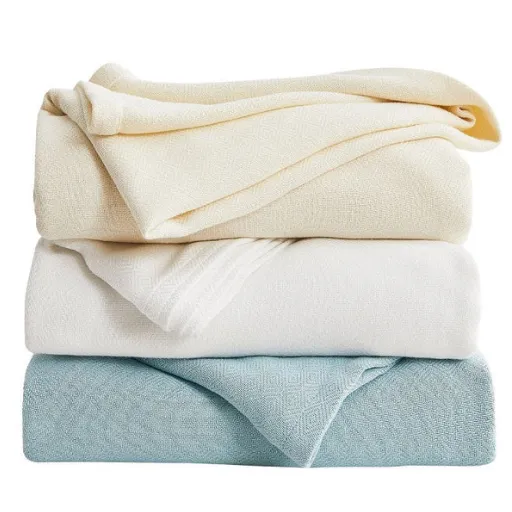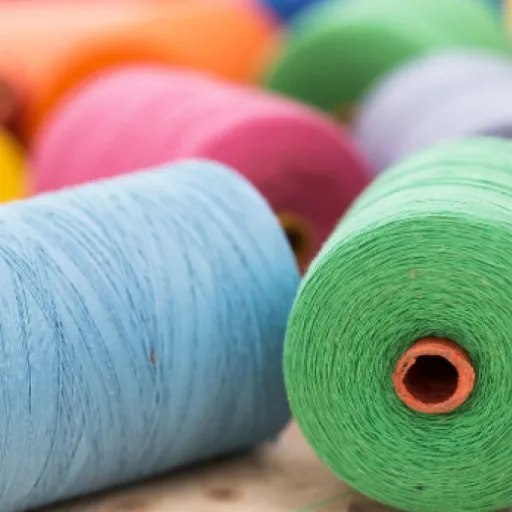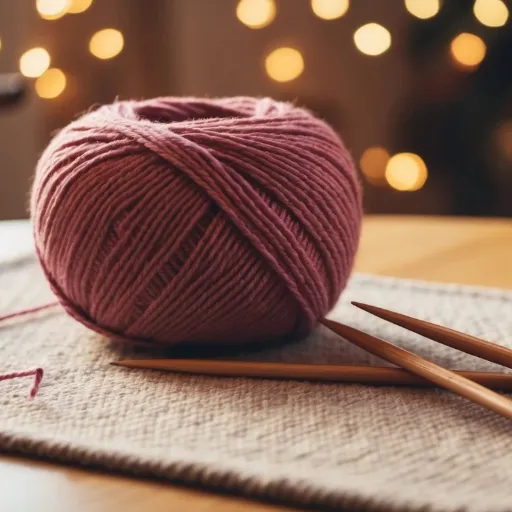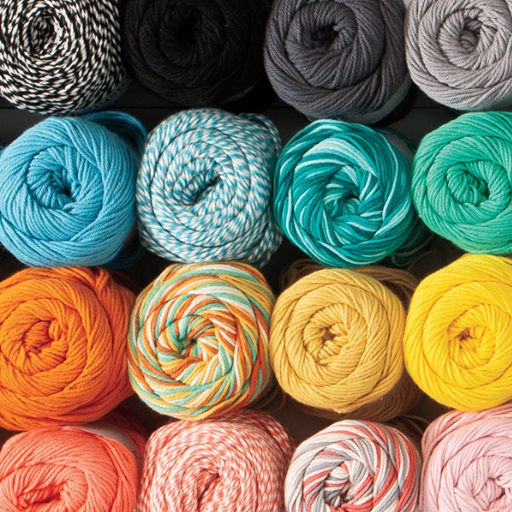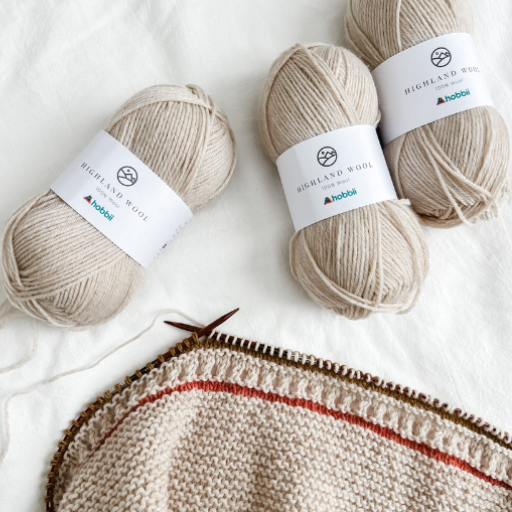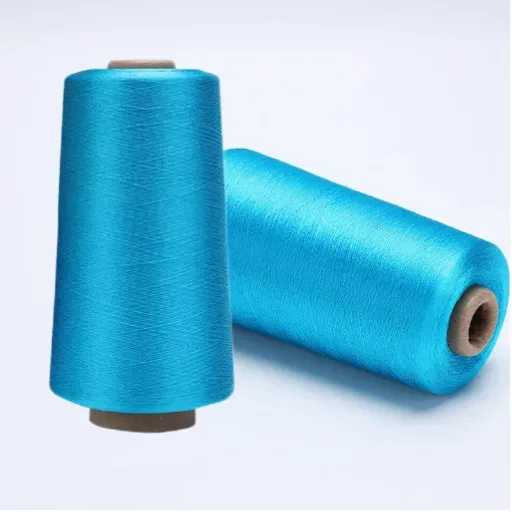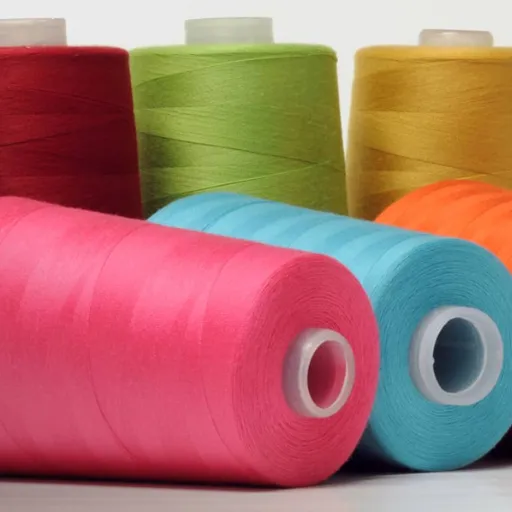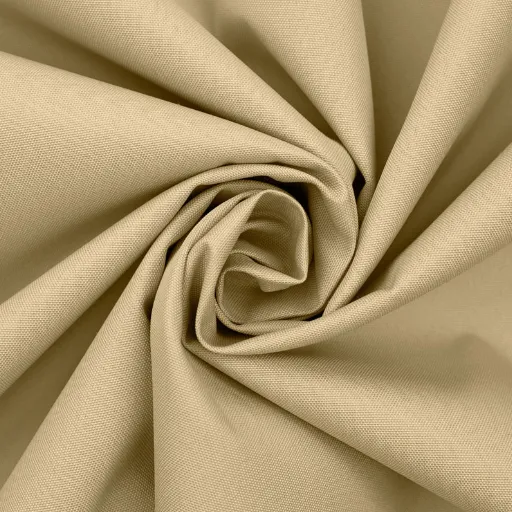Acrylic yarn is a favorite among crafters and textile lovers because it is inexpensive, highly versatile, and comes in beautiful colors. But have you ever thought about the composition of acrylic yarn? There has been considerable curiosity, or sometimes concern, about whether acrylic yarn can be termed “plastic yarn” and what that means to it being treated in the environment, its resistance to wear, and its general quality. The present article discusses acrylic yarn from its production and dating back to synthesis; it elaborates on the types of pros and cons it offers and separates the myths about the so-called synthetic fiber. From a curious crafter to a green-conscious consumer, there is something here for everybody to further clarify and aid in a project’s choice of yarn based on.
Introduction to Acrylic Yarn
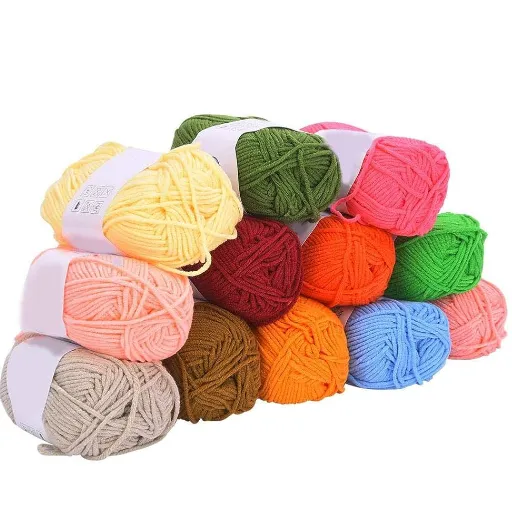
What is Acrylic Yarn?
Acrylic yarn is a synthetic fiber that is produced from polymers in the category of acrylonitrile during the polymerization process. Acrylic yarn was developed as a substitute to natural fibers such as wool. Affordable, strong, and versatile, acrylic yarn has found wide application in the textile industry. Its fibers are capable of taking up very intense shades, thereby becoming a favorite choice for all sorts of craft and knitting projects.
Among the world’s best advantages of acrylic yarn is its resistance. It does not get harmed by moths, mildew, or other natural elements that inflict injury on conventional fibers. It is slight in weight, feels soft, and retains heat very well, thus making it an ideal choice for sweaters, scarves, and blankets. Acrylic yarn can be washed using a washing machine, and so convenient for the busy crafter looking for low-maintenance fiber.
Acrylic yarn is a petroleum-based product and it is nonbiodegradable, so the negatives that come with it are environmental. For the environmentally conscious, this can be a downside. Nevertheless, some crafters find it a good price for a good value, being available in numerous textures and colors, making it an easy, practical choice for any number of projects.
The Rise of Synthetic Fibers for Crafting
In and of themselves, synthetic fibers have become increasingly popular for crafting due to their price, versatility, and low maintenance. They tend to be more affordable than are natural fibers, and that is good because it broadens the pool of potential crafters. They come in more textures and weights than natural fibers, and synthetic fibers certainly offer more colors to work with, which allows crafters a broader spectrum of designs and techniques to try.
Durability is something else that synthetic fibers bring to the table, along with ease of care. Synthetic yarns usually resist repeated washing and wear, making them more suitable for everyday use in projects such as blankets, scarves, or children’s wear. Moreover, their resistance to pests and mold ensures that finished projects last longer than comparable natural fiber forms, a factor that appeals to crafters looking for longevity and practicality.
However, with the growing use of synthetic fibers come the environmental issues. Since these fibers are petroleum-based, they simply are not biodegradable, which means they pollute the atmosphere during both production and disposal processes. Environmentally conscious crafters face a dilemma between cost, convenience, and sustainability. Synthetics, however, have cultivated a well-grounded reputation in the crafting world because of their ability to cater to the needs of both novice and expert artisans.
Why Do People Use Acrylic Yarn?
Acrylic yarn is the fabric of choice since it is affordable and readily available. Compared to natural fibers such as wool or cotton, acrylic is the economic choice accessible to artisans of all levels of expertise. It is also available in countless colors, weights, and textures, providing an immense choice to cater to all types of projects.
Another factor in favor of acrylic yarn is that it can endure the rigors of use. Being able to resist wear, stretching, and shrinking makes it ideal for blankets, scarves, and other items that are used or washed often. Furthermore, the care aspect is very simple-washing-machine and dryer-friendly are two big pluses as far as the everyday carry is concerned.
In the case of acrylic yarn, it goes down as being a very easy yarn because it is very smooth and generally easy to work with. This is why it is best recommended for the beginner. Even though it fares worse for the environment when compared with those that are natural, its versatility, strength, and cheap price make it an option that many an artist still leans on for its craft activities.
Chemical Composition of Acrylic Yarn
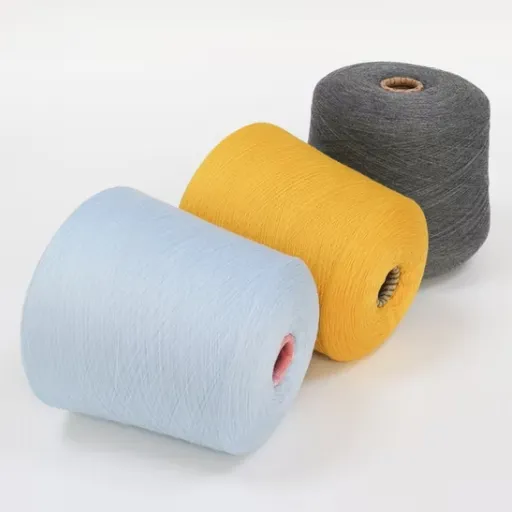
Understanding Acrylic Fiber
Acrylic fiber is a synthetic polymer made chiefly from acrylonitrile, a petrochemical obtained from crude oil. The process involves polymerizing acrylonitrile with other monomers such as vinyl acetate or methyl acrylate, depending on what properties are desired: flexibility, strength, etc. Recent data suggested that something like 10% of fiber production worldwide is acrylic fiber production, thus underlining its dominance in the textile sector.
This molecular structure, while granting durability and resilience, renders the acrylic fiber capable of mimicking natural fibers such as wool, while being much lighter. Studies have proven that acrylic yarns resist moths, mold, and mildew much more than natural fibers; hence, they are excellent for a variety of environments.
Furthermore, recent investigations emphasize the developments taking place in acrylic fiber manufacture. With the arrival of improved technologies, the environment has thus been somewhat safeguarded-from recycling of acrylonitrile by-products to reducing water consumption in fiber processing. Still, the environmental sustainability of acrylic is a matter of concern, because being fossil-fuel-based, acrylic has problems with biodegradation. According to the United States Environmental Protection Agency (EPA), synthetic polymers such as acrylic take from many years to decades to degrade, thereby contributing to the formation of microplastics in nature.
Besides for fashion and textiles, acrylic fibers are used industrially. They are also applied in various outdoor fabrics, upholstery fabrics, and filtration systems, being good at resisting UV rays and harsh weather conditions. Combining these applications with cheap production ensures that acrylic fibers still have their place in both consumer and industrial worlds.
How Acrylic Yarn is Made
Mainly, acrylic yarns are knitted with the polymer polyacrylonitrile, with acrylonitrile being the major monomer. Practically speaking, there are several steps involved in making acrylic yarn:
- Polymerization: The process begins with the polymerization of acrylonitrile. It is mixed with other chemical monomers to create a durable, flexible polymer. This reaction results in a viscous liquid commonly called polymer paste.
- Spinning Solution Forming: The polymer paste is then dissolved in a suitable solvent, usually dimethylformamide or something similar, to give a spinning solution. At this point, depending on the type of fiber needed at the downstream stage, some additives can be incorporated to modify certain qualities such as elasticity or flame resistance.
- Spinning:
- Wet Spinning (Most common method): The spinning solution is extruded through spinneret holes-glass, corresponding to showerheads-into a coagulation bath filled with a non-solvent, where the fibers are solidified.
- Dry Spinning: This process involves extrusion of a solution into a warm, dry atmosphere so that the solvent is evaporated and the fibers solidified.
- Stretching and Drawing: Stretching the solidified acrylic fibers causes the polymer chains to be aligned, which largely increases the strength, elasticity, and durability of the fibers. This very step is what makes the resultant yarn resilient.
- Washing and Finishing: At this stage, fiber washing proceeds to detach any leftover solvent or impurities, then it might be treated to have soft feel or special textures, or anti-pilling agents, or dye.
- Cutting or Conversion: Lastly, the long fibers are either cut into staple fibers for blending or left in continuous filament form, depending on the end application, where these fibers will be spun into acrylic yarn.
Comparison with Other Synthetic Yarns
Among synthetic yarns, acrylic yarns are prized for their versatility, affordability, and being somewhat capable of imitating softness and warmth given by natural fibers such as wool. Generally speaking, when considering polyester yarn, acrylic is lighter and warmer, hence the much-preferred choice for manufacturing winter clothes and soft blankets. Acrylic rarely fades and thus offers dramatically bright colors for any dyeing affairs.
Against nylon, acrylic fibers cannot compare to durability and elasticity, yet are often less expensive and easier to maintain. Maintaining a pleasant touch guarantees that acrylic yarn is the softest for comfortable clothing, while nylon is ideal to have highly durable and stretchable apparel like sportswear or hosiery. This distinction helps guide material selection depending on the intended purpose.
Polypropylene is weakened by means of moisture and texture, unlike acrylics. On the other hand, polypropylene is very water repellent but does not offer much softer or breathable properties compared to acrylic. Acrylic, in turn, offers a softer feel and a somewhat less moisture-wicking capability than polypropylene, thus making it an excellent choice for apparel and home textiles. It is these factors that give acrylic yarns the reputation of being versatile and trustworthy among synthetic fibers.
Environmental Impact of Acrylic Yarn
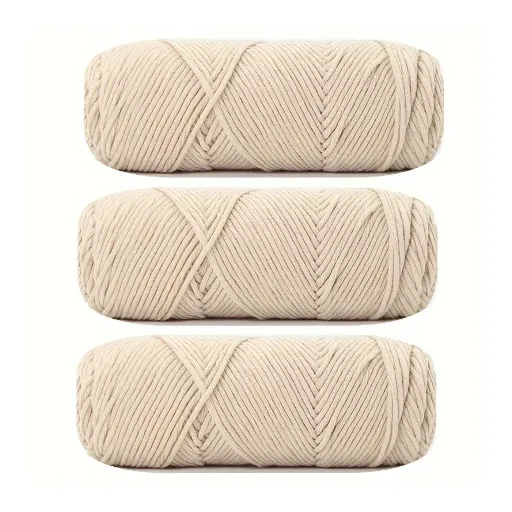
How Is It Being Made? And What Are The Effects?
Acrylic-yarn production is primarily a chemical process involving polymerization of acrylonitrile, a compound derived from petroleum or natural gas. This process uses a lot of energy and resources; hence, the process has a huge environmental footprint. The production activity would release emissions contributing much to air pollution and climate change-VOCs and other greenhouse gases.
The wastewater coming from manufacturing is another high-level environmental menace. This wastewater is often laden with hazardous chemicals that will, if released untreated, adversely affect ecosystems and water quality. So they need to be treated properly to protect the damage to the environment due to disposal of these byproducts.
Acrylic yarn, besides being non-biodegradable, has the capability of persisting in landfills for an eternity. Eventually, it is able to devolve into microplastics, affecting the marine organisms and wider ecosystem. Such circumstances make a case for sustainable initiatives and innovations in acrylic yarn production to lessen the impact on the environment.
Disposal and Biodegradability Issues
Disposal of acrylic yarn has severe environmental implications due to its non-biodegradable status. Present investigations mention a time scale of several hundreds of years for synthetic fibers such as acrylic to decompose environment hostile to the very breakdown, and these plastics enter the ecosystem in the form of microplastics that pollute the soil, water, and air. The Ellen MacArthur Foundation reported that approximately 35% of microplastics found in the ocean are those coming from synthetic textiles, which include acrylic yarn. These microplastics have found their way into marine animals, traveling up through the food chain and ultimately harming humans.
Improper disposal of acrylics and lack of recycling prevent the doing away with the very nature of these problems. According to a United Nations Environment Programme report, less than a tenth of synthetic textiles find their way to recycling, while the remaining majority is dumped in landfills or incinerated, releasing toxic chemicals into the atmosphere. Some of the solutions being explored include chemical recycling which is supposed to break down acrylic fibers to reclaim raw materials, as well as designing biodegradable alternatives. All these, however, are still midway and will necessitate effort and finances to make a meaningful impact.
In solving the disposal and biodegradability issues, innovation, laws, and changes in consumer behavior will combine to forge a path to lessen the use of acrylic and similar synthetic fibers.
Microplastics and Their Threat to Oceans
Acrylic yarn does not decompose; rather, this yarn can persist in the environment for hundreds of years, breaking down into very tiny fragments called microplastics. Mostly, microplastics end up in the oceans, threatening marine life and ecosystems and eventually posing a human health hazard through the food chain. The manufacture and its dumping also deplete the land of natural resources and pollution; this also increases its environmental footprint.
Acrylic yarn is considered to be durable, cheap, and versatile for workmanship; conversely, its inherent plastic nature points toward consideration of some sustainable options. Making use of biodegradable or recycled yarns, together with giving credence to proper disposal measures, may lessen the impact of acrylic on the environment.
Health and Safety Considerations
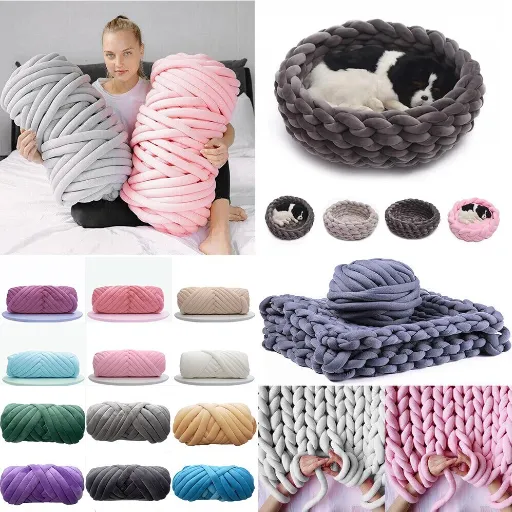
Are Acrylic Yarns Safe for Crafters?
Caring is an acrylic yarns that are generally considered safe to work with. Made of synthetic materials, mostly polyacrylonitrile, they do not pose a threat to human health during normal craft activities like knitting or crocheting. Although, as with any materials used for crafting, proper handling should be ensured, and precautions should be considered in cases of hypersensitivity or allergies to synthetic fibers.
Acrylic yarns can release trace amounts of volatile organic compounds (VOCs) if exposed to high temperatures, such as ironing or being close to open flames. Some basic information and safety measures should be taken into account to keep this from happening during crafting. Ensuring that the room is well ventilated will help absorb any stray fumes after the fact.
The slightest friction felt due to the interaction between acrylic fibers and the skin could cause some minor irritations or discomfort for sensitive skin. To lessen this risk, brands have adopted prospects of hypoallergenic or softer acrylic blends. Textile acrylic fibers basically remain a lot of picked and safe option for most knitters, given that the basic safety rules have been followed during use.
Potential Allergies and Sensitivities
There are some cases in which acrylic fibers may cause skin irritation or sensitivities, especially if a person already has some sort of skin condition or allergies prior. Usually, the factors or aspects that cause these are the synthetic nature of acrylic or certain chemicals used during the process. The involved symptoms may include redness, itching, or mild inflammation of the skin. Nevertheless, intense allergic reactions toward acrylic fibers are considered seldom.
In order to reduce the possibility of a reaction, one might want to opt for hypoallergenic or softer acrylic blends, which are designed with the least irritation in mind. Secondly, washing acrylic fabrics before wearing them may assist in removing chemicals left over from manufacturing that might cause a reaction. Acrylic-wearing individuals with sensitive skin should also consider wearing an additional layer of natural fibers underneath.
Should the irritation become worse or fail to disappear after continued contact with acrylic fibers, discontinue use and find a doctor to assess your condition. They will tell you what the best treatments-remedies-topical ointments are, or other fabrics that you might be able to wear comfortably. Understanding your sensitivities and choosing materials accordingly would only enhance your comfort and safety when it comes to acrylic products.
Long-term Use Implications
The longer an individual is in contact with synthetic acrylic fibers, the greater the chance of skin irritation, while allergy-bearing and moisture-retaining acrylic fibers would be uncomfortable to wear for an ill person. People who have allergies may experience a worsening of their symptoms from constant contact with acrylic products. Monitor any recurrence of dermatitis or dryness if you use acrylic products regularly.
Although acrylic fibers are strong and are being put into many products, they are not biodegradable. So prolonged use of acrylic fabrics adds to the environmental threat of waste accumulation and microplastic pollution, especially when it is being washed. So, the product has to rate the environmental implications when considering a long-term choice on the purchase of synthetic fabrics like acrylic.
As far as choices go, this is one you have. For the conscientious consumer, an alternative is natural fibers since they are often friendlier to the skin and eco-conscious. Having an occasional check of your skin reaction to acrylic and consulting a dermatologist when the problem persists shall help in avoiding greater risks. Be mindful of the person’s health and the environment as an informed decision allows the continued responsible use of acrylic products.
Sustainable Alternatives to Acrylic Yarn
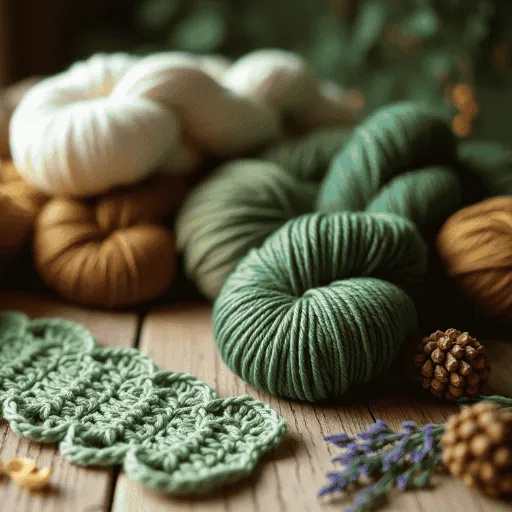
Exploration of Sustainable Yarn Options
The most environmentally friendly antonym of acrylic yarn would be natural fiber yarns such as cotton, wool, or bamboo. These materials come from renewable resources and therefore become a good source of environmentally-friendly crafters. For instance, in organic cotton, harmful pesticides are not employed, while wool is biodegradable, sustainable when obtained from farms acting in good conscience, and far less destructive to natural habitats when compared with most synthetic yarns. Bamboo, on the other hand, is a suitable alternative by virtue of its relatively quick growth and environmentally friendly cultivation processes.
Recycled yarns represent an alternate choice for anyone striving to reduce waste. They are mostly produced from upcycled textiles or materials sent to recycling so that fewer resources are consumed in their manufacturing processes. Thus, by choosing recycled yarns, consumers are directly participating in the reduction of landfill waste and promoting a circular economy in textile production.
The alternative for durable and eco-friendly cotton yarns would be plant-based fibers such as linen and hemp. They come from plants that need a minimal amount of water and without any synthetic molecules. Strong and breathable yarns, in their various forms, create wonderful possibilities for crafting. Making a choice of these materials goes a step further to support environmentally responsible activities, wherein the crafting stands on the premise of both high-class and conservation.
Cotton Yarn vs. Acrylic Yarn
| Comparison Factor | Cotton Yarn | Acrylic Yarn |
|---|---|---|
| Source and Composition | Natural fiber from the cotton plant. Breathable, soft, and hypoallergenic. Ideal for garments worn close to the skin and for people with sensitive skin or allergies. | Synthetic fiber derived from petroleum-based chemicals. Man-made with a wide array of colors and textures. Generally more affordable. |
| Durability and Performance | Absorbent and moisture-wicking. Suitable for warm-weather items, dishcloths, and towels. Provides great drape but may stretch. Can be less resilient over time. | Durable against wear and wrinkles. Maintains shape well. Lighter than cotton, suitable for bulky projects. Less breathable and may trap heat, making it less ideal for summer wear. |
| Maintenance and Care | Machine washable but may shrink or lose shape if not handled properly. Requires more careful care. | Easy to care for. Resists staining and shrinking. Can be washed and dried in machines. Susceptible to pilling over time. |
| Cost and Availability | Generally more expensive due to the labor-intensive process of growing, harvesting, and spinning fibers. Appeals to eco-conscious consumers. | Often more affordable and widely available. Less expensive option for large projects. |
| Environmental Aspect | Biodegradable and less polluting when produced sustainably. Conventional cotton farming uses excessive water, pesticides, and fertilizers. Organic options are more eco-friendly. | Fabricated from nonrenewable petroleum resources. Non-biodegradable. Production is responsible for environmental pollution. Contributes to microplastic pollution. |
How to Make Sustainable Choices in Crafting
Choosing nature-friendly raw materials poses as the first step in making sustainable choices in crafting. This implies the acceptance of natural fibers such as organic cotton, wool, bamboo, or recycled yarns in keeping with renewable and biodegradable. Never go for synthetic materials such as acrylic or polyester, which are petroleum-based and contaminate the environment. Besides, materials can be bought locally for a lessened environmental impact caused by transportation.
Bear in mind waste reduction through well-planned projects that make good use of materials. Reuse scraps, upcycle old fabric, or yarn, and keep old small remnants for new projects. High-quality materials will make the projects last longer and reduce rapid wear-and-tear replacements. And, where possible, choose tools and accessories crafted from sustainable materials such as wood or metal instead of plastic.
Lastly, be mindful of your crafting habits. Use non-toxic adhesives, paints, and dyes that are safe for the environment and your health. Properly dispose of waste materials you might generate, recycling whenever possible. By following these steps, you are able to cherish whatever you are creating while promoting a sustainable and green way of life.
Frequently Asked Questions (FAQ)
Q: Is acrylic yarn a plastic?
A: Since acrylic yarn requires the use of synthetic fibers that come from petroleum-based products, the yarn is actually one of the plastic yarns. This also means that they are not classified as natural fibers such as wool or cotton.
Q: What are the advantages of having acrylic yarn?
A: Acrylic yarn is widely popular among crocheters and knitters for its array of colors and affordable price. It was an easy thing to wash and dry, which would only add up to its discretion for any given project.
Q: How is acrylic yarn compared to natural yarns?
A: It does not confer the same level of breathability and softness with which natural yarns such as wool or cotton usually provide; therefore, acrylic yarn is, in contrast, quite durable and resistant to moths and mildew.
Q: Is there any kind of downside with acrylic yarn?
A: While having its advantages, others might see it as an undesirable choice just because it is plastic, which usually does not lie well with the environment, such as the minute plastic fibers they introduces to the water supply when washed.
Q: What is recycled acrylic yarn?
A: Recycled acrylic yarn is made from post-consumer plastics, thereby eliminating further effluents generated in the production of a “virgin” acrylic yarn. This is an environmentally friendly alternative to traditional acrylic yarn.
Q: Good yarn, is that acrylic?
A: Mostly, crafters have regarded acrylic yarn as a good yarn because it is cheap and versatile. Also, it comes in a wide range of colors and can be used for almost any project-from clothing to home decor.
Q: What is the cost of acrylic yarn in comparison to natural fibers?
A: Generally speaking, acrylic yarn is cheaper than natural fibers such as wool or cotton, which makes it a big choice for a frugal crafter with beautiful fiber arts in mind.
Q: What is the environmental impact of acrylic yarn production?
A: In the production of acrylic yarns, plastic is used, which results in an energy- and water-intensive process. Hence, environmental considerations come into play, bearing in mind the effect acrylic yarn may have across shorelines worldwide.
Q: Why choose acrylic?
A: Many people choose acrylic yarn because of its convenience and easy maintenance. It is a durable fabric that is washable and less likely to shrink or lose its shape, unlike some natural yarns.
Q: What projects are particularly suitable for acrylic yarn?
A: Because of its durability and easy washing, acrylic yarn is best for making blankets, children’s clothes, and accessories. It is also apt for newbies who are embarking on yarn and fabric crafts.
References
-
Why Is Acrylic Yarn Bad For The Ocean? – Discusses the synthetic nature of acrylic yarn and its environmental impact.
-
Acrylic Yarn | Plastics | Environment | Crochet | Knitting – Explains that acrylic yarn is made from polyacrylonitrile, a type of plastic derived from petroleum.
-
Why I’m breaking up with Acrylic- and why you should too – Highlights acrylic yarn as a plastic pollutant and its composition.
-
Acrylic fiber – Wikipedia – Provides detailed information on acrylic fibers, their composition, and production.
-
How Acrylic Yarn Is Made: A Step-by-Step Guide – Explains the production process of acrylic yarn and its synthetic polymer base.








